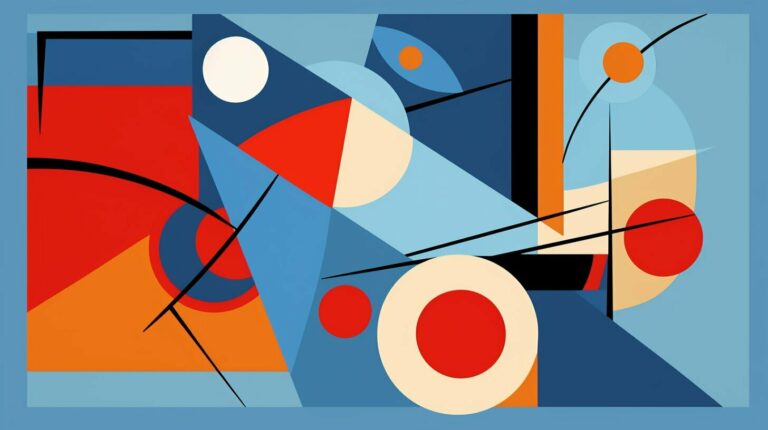Object-oriented programming (OOP) is a powerful paradigm for designing software applications. One key aspect of OOP is the concept of inheritance, where a subclass inherits properties and behavior from a superclass. While inheritance can be useful in certain situations, it can also lead to rigid and inflexible designs. This is where the concept of composition comes in.
Composition is an alternative technique that emphasizes building objects from smaller, more modular components rather than inheriting behavior from a superclass. By favoring composition over inheritance, developers can create more flexible and maintainable code that can adapt to changing requirements more easily.
Key Takeaways:
- Composition is an alternative technique to inheritance in OOP.
- Favoring composition over inheritance can lead to more flexible and maintainable code.
- Composition emphasizes building objects from smaller, more modular components.
Section 2: Understanding Composition in OOP
In object-oriented programming (OOP), composition is a technique that enables the creation of complex objects by assembling simpler objects. Rather than relying on inheritance, composition achieves flexibility and modularity by combining independent components.
Composition is a fundamental principle of OOP design that promotes code reuse and reduces the complexity of software systems.
What is Composition?
Composition involves creating an object that contains other objects as part of its state. These objects, also known as components, are responsible for different aspects of the object’s behavior.
For example, let’s say we have a class called “Car” that needs to have an engine, a transmission, and a set of wheels. Rather than inheriting these properties from a base “Vehicle” class, we can create separate classes for each component and assemble them into the “Car” class.
This approach allows for greater flexibility and modularity since each component can be modified or replaced independently. It also reduces the complexity of the overall design by breaking it down into smaller, more manageable parts.
How does Composition differ from Inheritance?
While inheritance involves creating a hierarchy of classes that share properties and behavior, composition focuses on combining independent components to create a more complex object.
With inheritance, subclasses inherit properties and behavior from their parent classes, which can lead to tight coupling and a fragile design. In contrast, composition allows for looser coupling and a more flexible design since components can be swapped in and out without affecting the rest of the system.
Composition provides a more intuitive and modular approach to software design than inheritance, making it easier to maintain, extend, and evolve software systems over time.
Elements and Principles of Composition
Composition in object-oriented programming (OOP) is built on specific elements and principles that define how code should be structured. These building blocks ensure that the resulting software is flexible, reusable, and maintainable. The three key elements of composition are:
| Element | Description |
|---|---|
| Encapsulation | Encapsulation refers to the practice of hiding the internal workings of an object and exposing only the necessary interfaces to the rest of the system. This allows for more modular code, as objects can be treated as “black boxes” with well-defined inputs and outputs. |
| Abstraction | Abstraction is the process of distilling complex concepts into simpler, more manageable components. In OOP, this often involves creating abstract classes or interfaces that define a set of common behaviors or attributes that other, more specific classes can inherit. |
| Modularization | Modularization involves breaking down a large piece of code into smaller, more manageable pieces. This can be achieved through the use of classes, modules, and functions, which can be individually tested and maintained. |
Along with these elements, there are several principles of composition that guide the design of OOP systems. These include:
- Single Responsibility: Each object should have a single, well-defined responsibility or purpose.
- Separation of Concerns: Different components of the system (e.g. UI, business logic, data access) should be separated into distinct, independent modules.
- Dependency Injection: Objects should be designed to depend on abstractions rather than concrete implementations, allowing for easier testing and decoupling of components.
- Composition over Inheritance: As discussed earlier, favoring composition over inheritance can lead to more flexible and reusable code.
Applying Composition Techniques
Using composition in OOP offers numerous advantages, such as flexibility, code modularity, and easy maintenance. In this section, we will explore some practical examples of how to apply composition techniques to solve real-world design problems.
Composition Patterns
One common composition pattern is the Strategy Pattern, which allows you to dynamically change the behavior of an object at runtime by encapsulating algorithms within interchangeable components. This pattern is useful when you need to adapt an algorithm to different situations or when you want to hide complex algorithms from clients.
| Advantages | Disadvantages |
|---|---|
| Easy to add new algorithms without modifying existing code | May incur overhead due to swapping strategies at runtime |
| Promotes loose coupling between objects | Requires extra code for configuring and managing strategies |
Another composition pattern is the Decorator Pattern, which allows you to add functionality to an object at runtime by wrapping it with one or more decorator objects. This pattern is useful when you need to add features to an object dynamically without affecting its interface or when you want to provide multiple variations of an object.
| Advantages | Disadvantages |
|---|---|
| Easy to add new features without modifying existing code | May incur overhead due to multiple layers of decoration |
| Allows for flexible object composition | May result in complex code and difficult debugging |
Use Case: Building a Car
Let’s say we want to build a car using composition-based design. We start by creating a Car class, which consists of several components, such as an Engine, a Transmission, and a Chassis. Instead of subclassing these components, we define them as separate classes and use composition to assemble them into a car object.
For example, the Engine class could have several subclasses, such as GasEngine, DieselEngine, and ElectricEngine, each implementing a specific type of engine. We can then create a Car object and use composition to assign a specific type of engine to it, such as a DieselEngine.
Similarly, the Transmission class could have subclasses, such as ManualTransmission and AutomaticTransmission, each implementing a specific type of transmission. We can use composition to assign a specific type of transmission to the car object, such as an AutomaticTransmission.
Using composition, we can easily assemble and configure different types of cars by mixing and matching engine, transmission, and chassis components. This approach offers a high degree of flexibility and allows us to add new components without modifying existing code.
Conclusion
Composition is a powerful technique for creating flexible and reusable object-oriented designs. By using composition patterns and assembling objects from smaller, more focused components, we can create software that is easy to modify, maintain, and extend. In the next section, we will explore how the concept of composition applies to visual arts.
Composition in Visual Arts
Composition is a fundamental concept in visual arts, such as painting and photography. At its core, composition refers to the arrangement and organization of visual elements in a work of art. Just like in object-oriented programming, a well-composed artwork is one that is both visually pleasing and effective in communicating its message to the viewer.
Artists use various composition techniques to create balanced and harmonious artworks. These include elements such as color, line, shape, and texture, as well as principles such as balance, proportion, and contrast. By combining these elements and principles in different ways, artists can create compositions that evoke different emotions and communicate different ideas.
“Composition is one of the most important aspects of painting. It can make or break a painting.”
Similar to OOP, the principles of composition in visual arts emphasize the importance of simplicity and clarity. A well-composed artwork is one that is easy to understand and visually pleasing, while avoiding unnecessary complexity. Just like in OOP, a well-composed artwork is also flexible and adaptable, allowing for different interpretations and reactions from different viewers.
Composition in Music
Composition is an integral part of music, as it involves the creation of musical pieces using various techniques and structures. Composers use melody, harmony, rhythm, and other elements to craft music that is cohesive, engaging, and aesthetically pleasing.
One common composition technique in music is sonata form, which involves the repetition and development of musical themes throughout a piece. Another popular technique is counterpoint, which involves the simultaneous combination of multiple melodies to create a harmonious whole.
Composition also involves the use of musical notation, which enables composers to communicate their ideas to performers and audiences. Notation systems have evolved over time, from the medieval neume system to the modern staff notation used today.
Composers often draw inspiration from a variety of sources, such as nature, literature, and personal experiences. They may also incorporate elements of different musical styles and traditions into their compositions, creating unique hybrids and fusions.
Overall, composition is a vital aspect of music, enabling composers to express themselves creatively and connect with audiences on an emotional level.
Advantages and Disadvantages of Composition
Composition offers a number of benefits over inheritance when used in OOP. One of the key advantages of composition is flexibility. By using composition, developers can create more modular and maintainable code, as individual components can be swapped in and out as needed without impacting the overall system.
Another advantage of composition is code reusability. Components can be reused across different parts of the system, reducing the need for duplicated code and saving time in development.
However, there are also some potential disadvantages to using composition. One of the main drawbacks is increased complexity. With composition, there may be more classes involved in a given system, which can make it harder to understand and maintain.
Additionally, there is a risk of code duplication when using composition. If components are not designed properly, it may be necessary to create multiple instances of the same code, which can lead to inefficiencies and errors in the system.
Despite these potential challenges, the benefits of using composition in OOP generally outweigh the drawbacks. By carefully considering the design of a system and using composition techniques appropriately, developers can create more flexible, modular, and maintainable code that is better suited to evolving business needs and changing requirements.
Conclusion
In conclusion, composition is a powerful technique in object-oriented programming that offers many benefits over inheritance. By creating modular, flexible, and maintainable code, composition allows developers to build systems that can easily adapt to changing requirements and scale as needed.
Throughout this article, we have explored the key elements and principles of composition, looked at practical examples of how to apply composition techniques in OOP, and examined the role of composition in visual arts and music.
While there are potential challenges associated with using composition, such as increased complexity and potential for code duplication, the advantages far outweigh the disadvantages. By favoring composition over inheritance, developers can create elegant and efficient code that is both easy to understand and modify.
We encourage you to experiment with composition in your own OOP projects and see the benefits firsthand. With practice and experience, we are confident that you will come to appreciate the power and flexibility of composition in software design.







